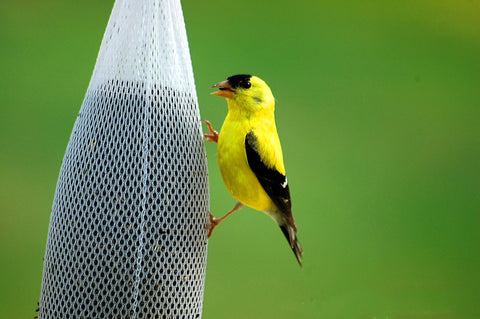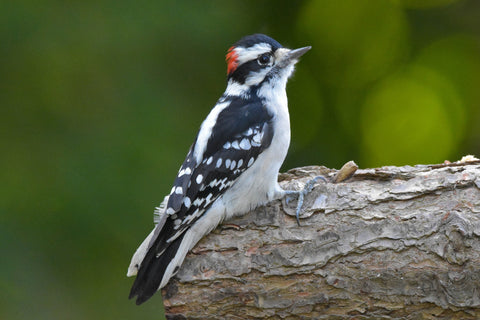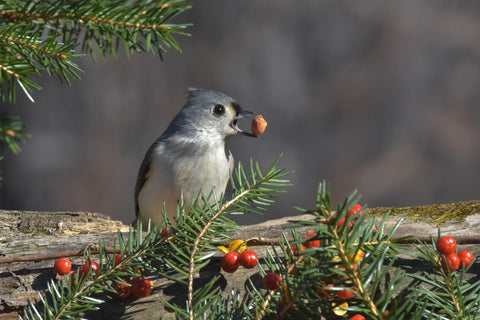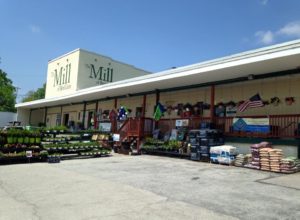The American Goldfinch (Spinus tristis) is a small, brightly colored finch that flies in a rise-and-fall pattern and is often vocal during flight. It is frequently seen with Pine Siskins and Redpolls. One of the few songbirds that molt twice yearly, the males are intensely colored during mating season and early summer. They are vibrant yellow with distinct black and white markings on the wings and tail.
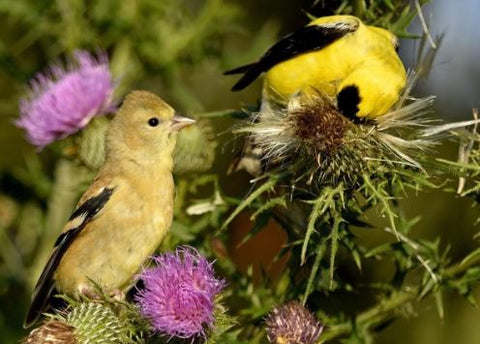
In the fall and winter, they are a much duller, almost olive color, which lowers their chance of predation. The females are always olive colored with black and white marked wings and tail.
Goldfinches frequent open floodplains and weedy fields, eating a variety of seed heads. Thistle, Coneflower, Rudbeckia, and Aster are their favorites. They love feeders with fresh thistle seed, black oil sunflower seed, or sunflower kernels.
Goldfinches are one of the birds that are comfortable eating upside down and there are special feeders made for them. This limits the birds that will eat from the feeder and makes watching the Goldfinches fun. They also will eat thistle from the mesh bags.
They are one of the few species that raise their young on regurgitated seeds and not insects. They build their nest in a fork of a large shrub or small tree. The nest is made of small twigs, bark, and plant fibers and then lined with thistle, milkweed, and cattail down. They will also find shed wool and hair. The nest is so well constructed that in a deluge it can hold water and the young can drown. There is typically foliage cascading over the nest to protect it. They usually lay five or so bluish-white eggs that sink into the down.
Since these birds feed their young, regurgitated seeds, they begin nesting later in the season once thistle, Echinacea (Coneflower), Rudbeckia (Black Eyed Susan), Asclepias (Milkweed), and other seed heads are available.
They are social birds, not territorial, so they frequent feeders in large numbers.


